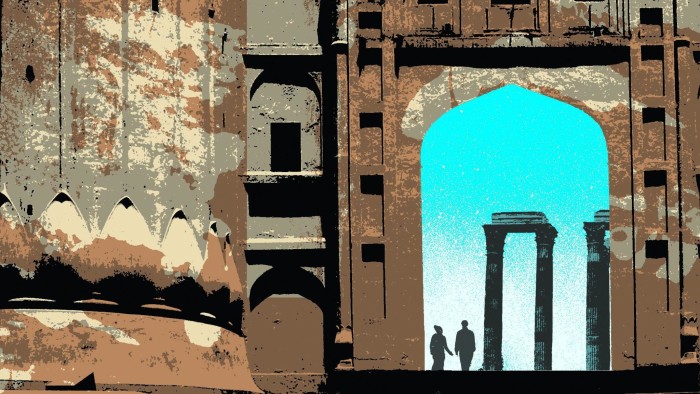‘A God in Every Stone’, by Kamila Shamsie

Simply sign up to the Life & Arts myFT Digest -- delivered directly to your inbox.
A God in Every Stone, by Kamila Shamsie, Bloomsbury, RRP£16.99, 320 pages
The initial pages of Kamila Shamsie’s new novel reveal the ghost of that excellent book by Michael Ondaatje, The English Patient (1992), but very soon Shamsie strikes out on her own and carries the reader with her. A God in Every Stone is a gripping story set largely in London and Peshawar in the years between the start of the first world war and the escalation of the Indian struggle for independence in 1930.
The book begins in July 1914, somewhere in the Ottoman Empire, where Vivian Rose Spencer, a young Englishwoman, is on an archaeological dig along with three Germans and six Turks. There, Viv soon falls in love with one of the Turks – her father’s friend, Tahsin Bey. Tahsin, aware of the differences in their age and culture, reciprocates, albeit carefully. He also soon reveals to her his greatest secret: he is not a Turk, but an Armenian subject of the Ottoman Empire, and he distrusts the Turkish authorities who are funding his dig.
The divided loyalties of imperial subjects is one of the recurring themes of Shamsie’s novel. It is examined not only in the context of the British Raj, but also through classical Greece and ancient Persia via the archaeological backdrop. When war breaks out Viv is hustled back to London by the British authorities. Working as a nurse in war-torn England, Viv, not realising the implications, reveals Tahsin’s secret disaffection to the British war authorities.
The pressures of nursing and a letter from Tahsin mentioning an ancient artefact they had discussed send Viv to Peshawar: there, she encounters Qayyum Gul, a Pathan soldier, and his younger brother, Najeeb, in whom she inculcates a love for archaeology and the classics. But circumstances and cultural differences soon separate Viv from the two brothers; she returns to London to discover the tragic consequence of her inadvertent betrayal of Tahsin.
In 1930, Viv is brought back to Peshawar by a letter from Najeeb, now a young archaeologist, about the lost artefact. When she arrives, Peshawar is in the throes of a movement to repudiate British rule. What happens to Viv and the two brothers in this heightened climate I won’t reveal – but I can say that the denouement is both dramatic and life-affirming.
Contemporary fiction has increasingly engaged with the Raj, from Salman Rushdie’s Midnight’s Children (1981) to Philip Hensher’s The Mulberry Empire (2002). A welcome addition to the genre, Shamsie’s novel, drawing lines of connection across times and places, evokes the past beautifully. At the same time, it is a moving story of love and betrayal, generosity and brutality, hope and injustice, full of characters that stay with you. Shamsie, who is Pakistan-born and London-based, is just as good at describing war-afflicted England as she is at bringing Peshawar alive in all its colours and smells. In the process, she explores – without belabouring it – the communality, contradictions and conflicts of empire.
The best of the contemporary novels about empire are just as well written and nuanced as my colonial favourites – Rudyard Kipling’s Kim (1901), EM Forster’s A Passage to India (1924) and the intricate works of Joseph Conrad. However, as postcolonial novels necessarily consider empire with hindsight, they often lack that sense of the unresolved contradictions of the time which gives us some of the most memorable elements of colonial fiction: the ludicrous, obese Hurree Babu in Kim who saves the entire Raj; the cave in A Passage to India; the fact that most of the darkness in Conrad’s Heart of Darkness hovers over London, not the Congo. Shamsie remedies this, not just by focusing on a historical phase of a particular empire, but also by using that moment to suggest – not state – similarities with other imperial projects, past and present. A God in Every Stone will surely confirm Shamsie’s increasing eminence in the British world of letters.
Tabish Khair is author of ‘How to Fight Islamist Terror from the Missionary Position’ (Corsair)
Comments